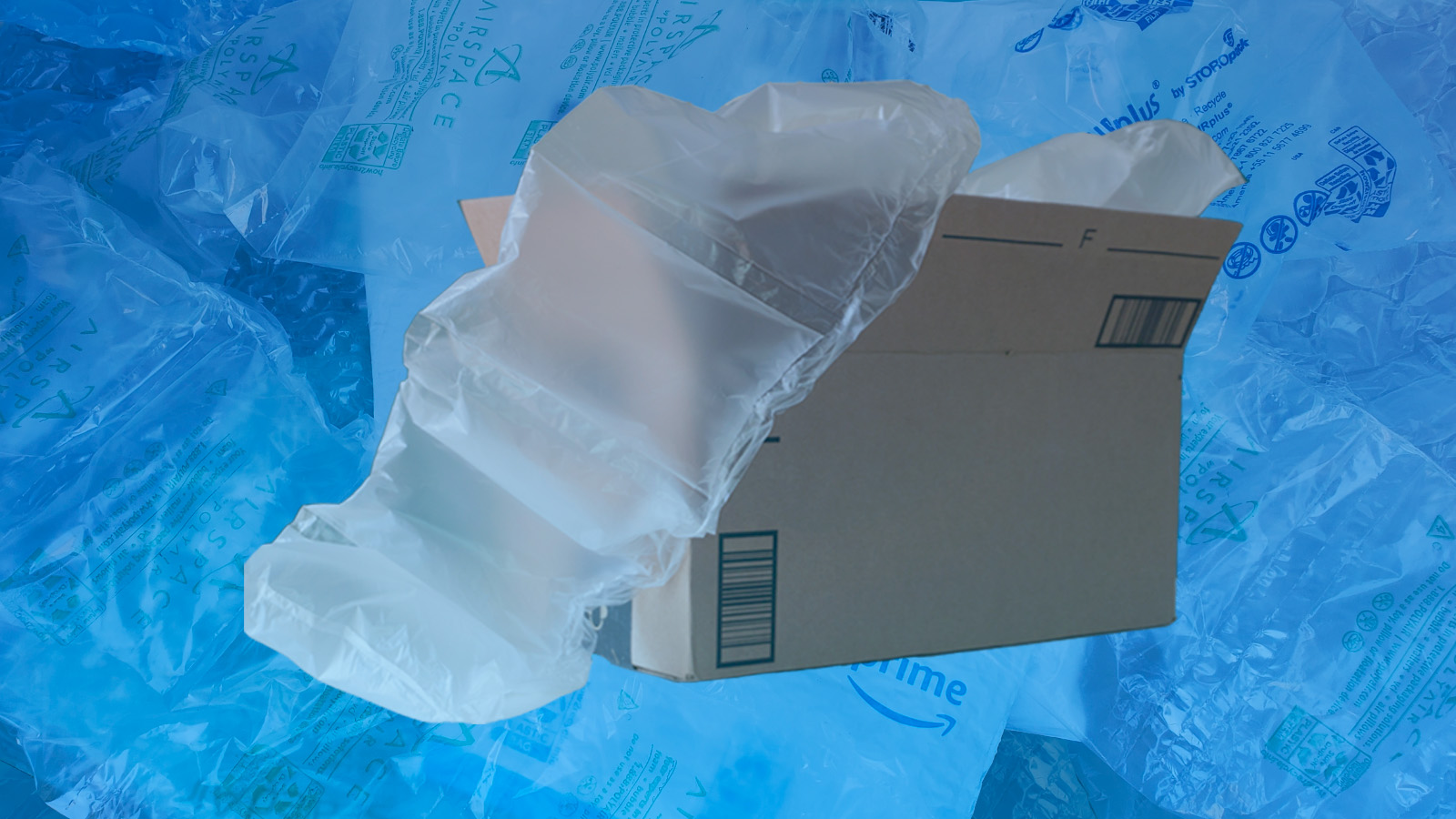
Tell Amazon: It’s time to move beyond wasteful single-use plastic packaging
Microplastics have become a significant environmental concern due to their widespread presence in various ecosystems, potential harm to wildlife and marine life, and the uncertainty surrounding their long-term effects on human health.
Take Action
Plastic is everywhere and in everything. It’s used as packaging, it’s in food service products, and it’s in clothing. All told, Americans generate more plastic waste than any other country in the world, 91% of which is landfilled or incinerated. In fact, the U.S. throws out enough plastic every 15.5 hours to fill the Dallas Cowboys stadium, and that amount is increasing.
Often when talking about plastic pollution, the images that come to mind are turtles snared in bags or straws, massive trash gyres in the Pacific Ocean, or whales washed ashore with hundreds of pounds of plastic waste in their stomachs. It may not be surprising that studies found 59% of all seabird species had ingested plastic, with that number expected to rise to 99% by the year 2050.
However, litter and marine debris alone don’t capture the full scope of our plastic pollution problem. Research suggests that we could be not counting 99% of the plastic that makes its way into the ocean. That’s because plastic doesn’t degrade in the environment like an apple or a piece of paper, instead it breaks into smaller and smaller pieces called microplastics.
Microplastic is plastic less than 5 mm in length, or smaller than a grain of rice. They’ve now been found in the deepest depths of the ocean, on the highest mountains in the world and everywhere in between.
How did they get there? Microplastics don’t arrive in the environment from just one source. Here are some of the main, known sources of microplastic pollution:
A growing area of concern regarding our plastic waste is the environmental and public health threat posed by these microplastics. They are severe suffocation and starvation hazards to wildlife and have been found in our air, food, and bodies. Microplastics also attract pollutants that may already exist in the environment at trace levels, accumulating toxins like DDT & PCBs and delivering them to the wildlife that eat them, often bioaccumulating through the food chain.
How can we stop microplastic pollution?
In order to stop the influx of microplastics into the environment, we need to dramatically reduce the amount of plastic we are producing. That is going to take big changes on the local, state and national level.
Specifically:
In the face of a plastic pollution crisis that's growing more dire by the day and putting hundreds of species of wildlife in harm's way, retailers like Costco have a responsibility to reduce the use of wasteful single-use plastic wherever and however they can.
SUBMIT
How can you avoid microplastics?
As we are working to pass policies to reduce plastic production and pollution, here are some things you can do to lower your exposure to microplastics and your contribution to this growing problem:
As director of Environment Oregon, Celeste develops and runs campaigns to win real results for Oregon's environment. She has worked on issues ranging from preventing plastic pollution, stopping global warming, defending clean water, and protecting our beautiful places. Celeste's organizing has helped to reduce kids' exposure to lead in drinking water at childcare facilities in Oregon, encourage transportation electrification, ban single-use plastic grocery bags, defend our bedrock environmental laws and more. She is also the author of the children's book, Myrtle the Turtle, empowering kids to prevent plastic pollution. Celeste lives in Portland, Ore., with her husband and two daughters, where they frequently enjoy the bounty of Oregon's natural beauty.
